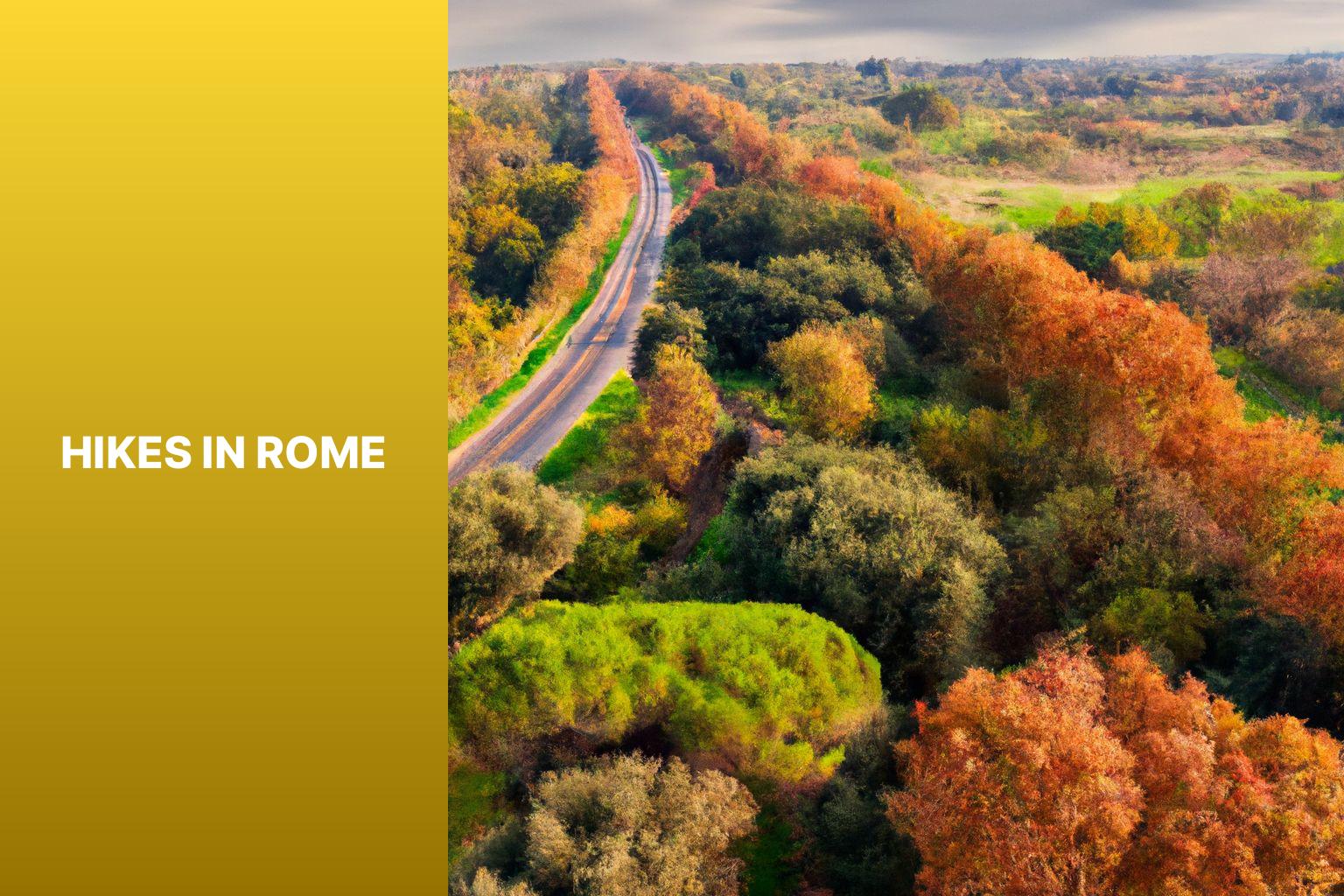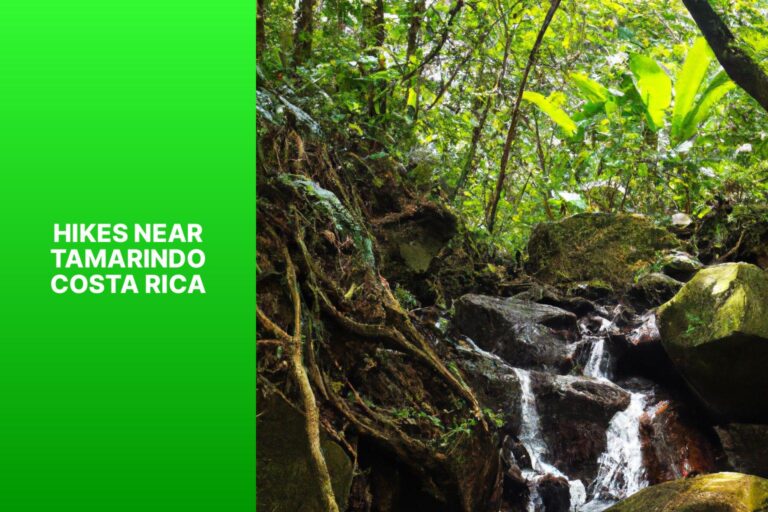Hikes in Rome
Rome, the Eternal City, offers more than just historical landmarks and ancient ruins. It is also home to a variety of stunning hiking trails that allow visitors to explore the natural beauty surrounding the city. From historical paths to scenic routes, Rome has something for hikers of all levels. Here we will explore some of the popular hiking trails in Rome, the scenic views and landmarks you can encounter on these hikes, and provide some useful tips for your hiking adventures.
When it comes to popular hiking trails in Rome, the Appian Way stands out as a historical and picturesque route. This ancient road offers a unique experience as you walk on cobblestones that date back to Roman times. Another notable trail is Monte Mario, which provides panoramic views of the city and is a perfect spot to enjoy a sunset hike. Villa Borghese is known for its beautiful gardens and walking paths, while Monte Testaccio offers a combination of nature and history with its artificial hill made of ancient Roman pottery shards. Parco degli Acquedotti is a scenic park that showcases ancient aqueducts and is a great choice for nature enthusiasts.
Along these hiking trails in Rome, you can also catch sight of iconic landmarks and breathtaking views. The Colosseum, a symbol of Roman history, can be seen from various vantage points. St. Peter’s Basilica, located in Vatican City, is another impressive sight to behold along your hiking journey. The Roman Forum unveils the remnants of ancient Roman civilization, while Piazza Navona offers a lively square to rest and soak in the vibrant atmosphere.
To make the most of your hiking experience in Rome, there are some helpful tips to keep in mind. Packing proper gear, including comfortable shoes and weather-appropriate clothing, is essential for a comfortable hike. Staying hydrated is crucial, especially during the warmer months, so remember to bring a water bottle. Understanding the difficulty level of the trails you plan to explore is important to ensure you choose routes that match your fitness level. It is important to respect nature and cultural sites by following designated paths and leaving no trace behind.
By exploring the popular hiking trails, enjoying the scenic views and landmarks, and following these tips, you can embark on unforgettable hiking adventures in Florence Italy and discover a different side of this historic city.
Key takeaway:
- Hiking in Rome offers the opportunity to explore scenic trails and landmarks: From the iconic Colosseum to St. Peter’s Basilica, hiking in Rome allows you to experience the city’s rich history and breathtaking views.
- Enjoy popular hiking trails in Rome: The Appian Way, Monte Mario, Villa Borghese, Monte Testaccio, and Parco degli Acquedotti are some of the popular hiking trails in Rome that offer diverse landscapes and natural beauty.
- Prepare properly for hiking in Rome: It is important to pack proper gear, stay hydrated, understand trail difficulty levels, and respect both nature and cultural sites while hiking in Rome. This ensures a safe and enjoyable hiking experience.
Popular Hiking Trails in Rome
Looking to explore the wonders of Rome through breathtaking hikes? Look no further! In this section, we’ll take you on a journey through the popular hiking trails that Rome has to offer. From the ancient beauty of the Appian Way to the stunning vistas of Monte Mario, get ready to immerse yourself in the natural wonders of Rome. Get ready for adventure as we discover the hidden gems of Villa Borghese, Monte Testaccio, and Parco degli Acquedotti.
Appian Way
The Appian Way in Rome is a popular hiking trail that offers a historic experience. Dating back to 312 BC, it is one of the first and most important highways of the Roman Empire. Walking along the well-preserved cobblestone path allows you to step back in time and explore ancient ruins, tombs, and monuments. This trail provides a glimpse into Roman culture and the architectural marvels of the past.
The Appian Way hike is perfect for history enthusiasts and those seeking a scenic journey. It offers picturesque countryside views and a peaceful escape from the city. You can immerse yourself in the serene surroundings and enjoy the fresh air while exploring historic landmarks.
Please note that the difficulty of the trail varies depending on the section you choose. Some parts are easier, while others require more stamina. It is crucial to understand the trail difficulty and come prepared with proper gear, including comfortable walking shoes and sun protection.
Respect nature and the cultural sites you encounter while hiking. Avoid littering or causing damage to preserve the integrity of these historic locations. By practicing responsible hiking, you ensure future generations can also enjoy the beauty and significance of the Appian Way.
Monte Mario
is a popular hiking trail in Rome with stunning views and insights into Roman culture. The trail offers breathtaking panoramic views of the city and the Tiber River. It is a moderate level hike, suitable for both beginners and experienced hikers. The trail spans approximately 5 kilometers and takes around 2-3 hours to complete. As you hike, you will encounter lush greenery and well-maintained paths. Once you reach the summit of Monte Mario, you will see iconic landmarks like St. Peter’s Basilica and the Vatican City. It’s a perfect spot for capturing memorable photographs and appreciating the city’s grandeur. Remember to pack essential hiking gear and respect the environment and historical sites along the trail. Embarking on a hike on Monte Mario is a must-do activity for nature lovers and history enthusiasts in Rome, leaving you with lasting memories of the Eternal City.
Villa Borghese
Villa Borghese is a popular destination for urban hikes in Rome. Here are some key features and activities to consider when exploring this beautiful spot:
– Stroll through the gardens: Villa Borghese has stunning gardens for leisurely walks and tranquility in nature.
– Visit the Galleria Borghese: Inside the villa, you’ll find an impressive collection of artworks by renowned artists such as Bernini and Caravaggio. Take the time to appreciate these masterpieces.
– Explore the lake and rent a boat: Villa Borghese has a lovely lake where you can rent a pedal boat and enjoy a relaxing ride amidst greenery.
– Picnic in the park: Villa Borghese‘s vast open spaces make it an ideal spot for a picnic. Grab some local food, find a peaceful spot, and indulge in a delightful meal surrounded by the park’s beauty.
– Visit the Bioparco di Roma: Located within Villa Borghese, the Bioparco di Roma is a zoo that showcases a wide variety of animal species. It’s a great option for families and wildlife enthusiasts.
While exploring Villa Borghese, respect the park’s rules and preserve its natural beauty. Avoid littering and follow any trail difficulty indications for a safe and enjoyable experience. Enjoy your time in this exquisite urban oasis!
Monte Testaccio
Monte Testaccio in Rome offers an exciting hiking experience with fresh air and beautiful views. Here are some key points to consider:
-
Historical significance: Monte Testaccio is a hill made of ancient Roman pottery fragments, providing a glimpse into the ancient Roman civilization.
-
Scenic trails: The hiking trails in Monte Testaccio offer breathtaking views of Rome’s skyline, including famous landmarks like the Colosseum and St. Peter’s Basilica.
-
Cultural exploration: Hiking through Monte Testaccio allows you to immerse yourself in Roman culture. The area is known for its street art, bars, and traditional trattorias with authentic Roman cuisine.
-
Trail difficulty: The Monte Testaccio hike is suitable for all skill levels. The trails are well-maintained and easy to navigate, making it a great option for beginners and experienced hikers.
-
Nature appreciation: Monte Testaccio is surrounded by lush greenery, providing a peaceful escape from the city. Take a moment to enjoy the nature and observe the local flora and fauna.
Considering these factors will help you make the most of your hiking experience in Monte Testaccio and create lasting memories of your time in Rome. Enjoy the adventure and embrace all that this unique hill has to offer.
Parco degli Acquedotti
Parco degli Acquedotti in Rome is a must-visit for nature enthusiasts and history lovers. This park showcases ancient aqueducts that once supplied water to the city. It is an example of Roman engineering and architecture. The park offers a serene atmosphere for walks and stunning views.
While exploring Parco degli Acquedotti, you will see impressive remains of the Roman aqueducts. These structures are tall and majestic, creating a surreal experience. You can learn about the history of the aqueducts and appreciate the ingenuity of the ancient Romans.
The park also has Etruscan tombs, adding mystery to your visit. These tombs offer a glimpse into the ancient civilization that once thrived in the region.
When visiting the park, wear comfortable shoes and bring a camera to capture the beautiful landscapes. The natural beauty of Parco degli Acquedotti is truly captivating.
Visiting Parco degli Acquedotti allows you to immerse yourself in Roman history and witness incredible engineering feats. Don’t miss the chance to explore this enchanting park if you’re in Rome.
Scenic Views and Landmarks on Rome Hikes
Immerse yourself in the breathtaking beauty of Rome’s hikes, as we explore the scenic views and iconic landmarks that await. From the awe-inspiring Colosseum to the grandeur of St. Peter’s Basilica, the rich history of the Roman Forum, and the vibrant atmosphere of Piazza Navona, each sub-section will unveil a captivating aspect of the city’s charm. Get ready to embark on an adventure filled with stunning vistas and historic wonders that will leave you in awe.
Colosseum
The Colosseum, also known as the Flavian Amphitheatre, is an ancient amphitheater in Rome. Constructed in AD 70-80, it was the largest amphitheater ever built. The Colosseum was mainly used for gladiatorial contests, animal hunts, and mock naval battles. It had a seating capacity of around 50,000 spectators and showcased Roman engineering and advanced construction techniques. Made of concrete and stone, its elliptical shape ensured optimal viewing. Visitors can explore the lower levels to see where animals and gladiators were housed. Guided tours provide historical context and insights into the lives of the gladiators and their battles. The Colosseum is not only a symbol of ancient Rome but also a significant archaeological and architectural site. It is a UNESCO World Heritage Site and draws millions of tourists each year. Today, it remains an iconic symbol of Roman culture and history. When hiking in Rome, be sure to visit the Colosseum to immerse yourself in the grandeur of ancient Rome.
St. Peter’s Basilica
St. Peter’s Basilica is a famous landmark in Rome, attracting tourists and religious pilgrims worldwide. Located in Vatican City, it is a significant site in Catholicism. When visiting, there are a few key points to consider.
First, be prepared for a significant amount of walking and standing, as St. Peter’s Basilica is a large complex. Comfortable shoes are necessary to navigate the marble floors and cobblestone pathways.
Secondly, dress appropriately when entering the basilica. Modest attire is required, with covered shoulders and skirts or shorts that reach the knee. Remove hats and sunglasses as a sign of respect.
Visitors should also be aware of expected behavior inside the basilica. Maintain a quiet and respectful demeanor as it is a sacred place. Photography is allowed, but without flash, and refrain from touching artwork or religious artifacts.
Finally, a pro-tip for visiting St. Peter’s Basilica is to arrive early in the morning or later in the afternoon to avoid crowds. Timing your visit strategically allows for a better appreciation of this architectural masterpiece.
Roman Forum
The Roman Forum is an important historical site in Rome. It was the political and religious center of ancient Rome. Today, it is an archaeological site. As you explore the Roman Forum, you can see grand temples, basilicas, and government buildings from ancient times.
Walking through the Roman Forum, you can get a glimpse into the daily life of the ancient Romans. You can admire the large marketplace and social hub that it used to be. You can also see the ruins of famous landmarks such as the Temple of Saturn, the Arch of Septimius Severus, and the Rostra, where famous speeches were given.
The Roman Forum is historically significant. It provides insights into the rich cultural and political heritage of ancient Rome. It is a popular destination for history enthusiasts and those interested in the grandeur of the Roman Empire.
The Roman Forum was the center of public life in Rome for centuries. It was used for political, religious, and social activities such as gladiatorial matches, public speeches, and religious ceremonies. The Forum was a symbol of Roman power and civilization, showcasing the impressive architecture and engineering of the time. Today, it is a UNESCO World Heritage Site and a testament to the enduring legacy of ancient Rome.
Piazza Navona
Piazza Navona is a must-visit in Rome. This square offers Roman architecture, the Fountain of the Four Rivers by Gian Lorenzo Bernini, cultural activities, street performers, and market stalls. It’s a place to immerse in history and culture. Don’t miss the chance to wander, marvel at the architecture, and enjoy the atmosphere. Visit in the evening for illuminated fountains and bustling nightlife. Capture stunning photos and experience the magic of this iconic square.
Tips for Hiking in Rome
“Thinking of hiking in Rome? Here are some essential tips to make your hiking experience in the Eternal City unforgettable. From packing the right gear to respecting nature and cultural sites, this section will provide valuable insights to help you navigate the trails of Rome. Stay hydrated, understand trail difficulty, and get ready to explore the stunning landscapes this ancient city has to offer. Lace up your shoes and let’s dive into the adventure!”
Pack Proper Gear
When hiking in Rome, it is important to pack the proper gear for a safe and enjoyable experience. Ensure that you have comfortable and sturdy hiking shoes with ankle support and a sturdy sole for stability on uneven terrain. Dress in layered clothing to adjust to temperature changes and don’t forget to pack a waterproof and windproof jacket for rain or strong winds. It is also crucial to bring sun protection such as a wide-brimmed hat, sunglasses, and sunscreen to shield yourself from harmful UV rays.
For effective navigation, carry a detailed map or GPS device and have a compass as a backup. Choose a comfortable backpack with sufficient capacity to accommodate essentials like water, snacks, a first aid kit, and extra clothing. Stay hydrated by bringing enough water and pack energy-boosting snacks like trail mix or granola bars.
Don’t forget to include a first aid kit in your gear, which should have band-aids, gauze, antiseptic wipes, and any necessary medications. In case of emergencies, it is essential to have an emergency whistle and flashlight to signal for help or navigate in low-light conditions.
Remember, proper gear is fundamental for safety and enjoyment while hiking in Rome. Make sure everything is in good condition and properly fitted before embarking on your adventure.
Stay Hydrated
When hiking in Rome, staying hydrated is crucial for safety and well-being. Here are some tips to help you stay hydrated during your hike:
– Bring enough water – Carry at least 1 liter of water per hour of hiking to replenish fluids lost through sweating and prevent dehydration.
– Use a hydration pack – Invest in a hydration pack that allows you to comfortably carry water on your back. This allows you to drink water while moving without the need to stop and take out a water bottle.
– Take regular water breaks – Make it a habit to take short breaks every 30 minutes to 1 hour to drink water and maintain consistent hydration levels.
– Avoid sugary or caffeinated drinks – Stick to plain water or electrolyte-enhanced beverages to keep properly hydrated.
Now, let’s explore a historical anecdote about the importance of staying hydrated during outdoor activities:
During ancient times, Rome’s legions faced the challenge of staying hydrated in the scorching heat of battle. Soldiers relied on water sources like aqueducts and natural springs along their routes to quench their thirst and stay hydrated. Access to and maintaining a steady supply of water were crucial for their physical endurance and performance on the battlefield. Recognizing the importance of hydration, Romans ensured their soldiers were well-prepared to face any challenges.
Understand Trail Difficulty
Understanding trail difficulty is essential for a successful hiking experience in Rome. Here are the key factors to consider when assessing trail difficulty:
1. Trail Length: It is crucial to determine the distance of the trail to get an idea of the level of physical exertion required.
2. Elevation Gain: Take into account the amount of ascent and descent along the trail. Steeper inclines and declines may add to the difficulty.
3. Trail Conditions: Consider the terrain and surface of the trail. Uneven or rocky paths may pose more challenges for hiking.
4. Trail Markings: Check if the trail is well-marked and easy to follow. Clear signage and visible trail markers are important for navigation.
5. Technical Obstacles: Assess if the trail incorporates any technical obstacles such as scrambling sections, narrow paths, or stream crossings.
6. Weather Conditions: Stay aware of the weather conditions during your hike. Hot and humid conditions can add to the difficulty.
7. Fitness Level: Evaluate your own fitness level and hiking experience. Opt for trails that match your abilities and comfort.
8. Time: Consider the amount of time you have available for the hike. Longer trails may require more endurance and planning.
By understanding these factors, hikers can make informed decisions regarding which trails they should tackle in Rome, ensuring an enjoyable and safe experience. Always be prepared, follow safety guidelines, and respect the natural environment while hiking.
Respect Nature and Cultural Sites
Respecting nature and cultural sites is of utmost importance while hiking in Rome. It is essential for preserving the breathtaking landscapes and iconic landmarks, thereby ensuring that future generations can also take pleasure in their beauty.
To ensure this, here are some essential guidelines to follow:
- Stick to the designated trails in order to avoid causing any harm to the delicate ecosystems and valuable archaeological sites.
- It is crucial to responsibly carry out and dispose of waste in the appropriate manner to keep the surroundings clean and pristine.
- When encountering wildlife, it is important to observe them from a respectful distance and honor their natural habitats.
- Under no circumstances should artifacts or plants be taken from any archaeological sites or natural areas. They should be left undisturbed for others to appreciate.
- Adhering to the local regulations is crucial to safeguard and preserve Rome’s cultural and natural heritage.
Through respecting nature and cultural sites, we contribute to the preservation of Rome’s beauty and historical treasures, enabling the enjoyment of future generations. Allow me to share an anecdote as an example. During my hike at Parco degli Acquedotti, I witnessed an individual attempting to remove a piece of an ancient stone wall. Recognizing the significance of respecting cultural sites, I explained the importance to them, and they chose not to cause any further damage. This incident clearly underscores the collective responsibility to protect these invaluable sites for future generations’ appreciation.
Frequently Asked Questions
1. What are some popular hiking trails in the Lazio region near Rome?
Some popular hiking trails in the Lazio region near Rome include the Necropolis and Waterfalls of Cerveteri, the Summit and hermitages of Monte Soratte, the Ring of Monte Calvio and Casalaccio, and the Appia Antica.
2. Are there any national parks in the Lazio region near Rome?
Yes, there are three national parks in the Lazio region: Abruzzo, Lazio and Molise National Park in Frosinone Province, Circeo Park in Latina Province, and Gran Sasso e Monti della Laga National Park in Rieti Province.
3. What can I expect to see on the Appia Antica hiking trail?
The Appia Antica hiking trail offers the opportunity to admire the extraordinary monuments and aqueducts of Imperial Rome. You can also explore the ancient city of Isola Farnese and the medieval village of Formello.
4. Which provinces in Lazio offer the best hiking landscapes?
In Northern Lazio, Viterbo offers forests, Etruscan culture, waterfalls, and lakes, while Rieti offers mountains and lakes. In Central Lazio, the Metropolitan Area of Rome offers seaside, historic hikes (such as the Appian Way), mountains, forests, and Roman culture. In Southern Lazio, Latina offers mountains and seaside panoramas, while Frosinone offers mountains, valleys, and waterfalls.
5. Are there any recommended regional parks for hiking in Lazio?
Yes, there are 16 regional parks in Lazio that offer great hiking opportunities. Some of the recommended ones include Bracciano Martignano, Castelli Romani, Monti Lucretili, Monti Simbruini, and Valle del Treja.
6. Can I hire a hiking guide for my trekking adventure in Lazio?
Yes, if you prefer a guided experience, you can avail the expertise of a hiking guide. They can provide you with valuable information about the trails, ensure your safety, and enhance your overall hiking experience.







